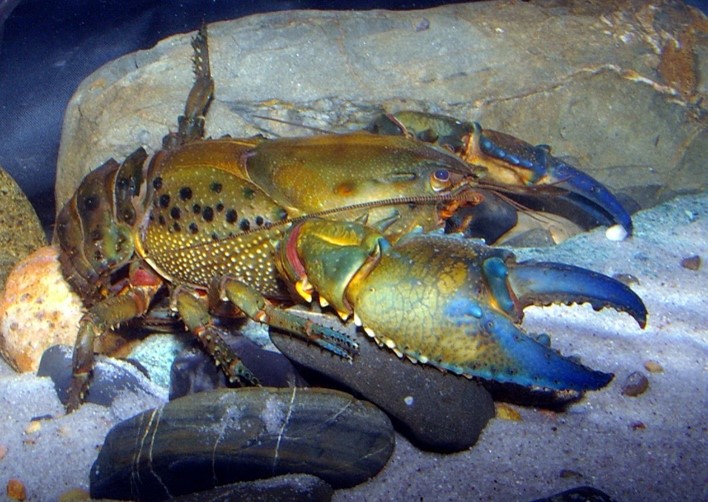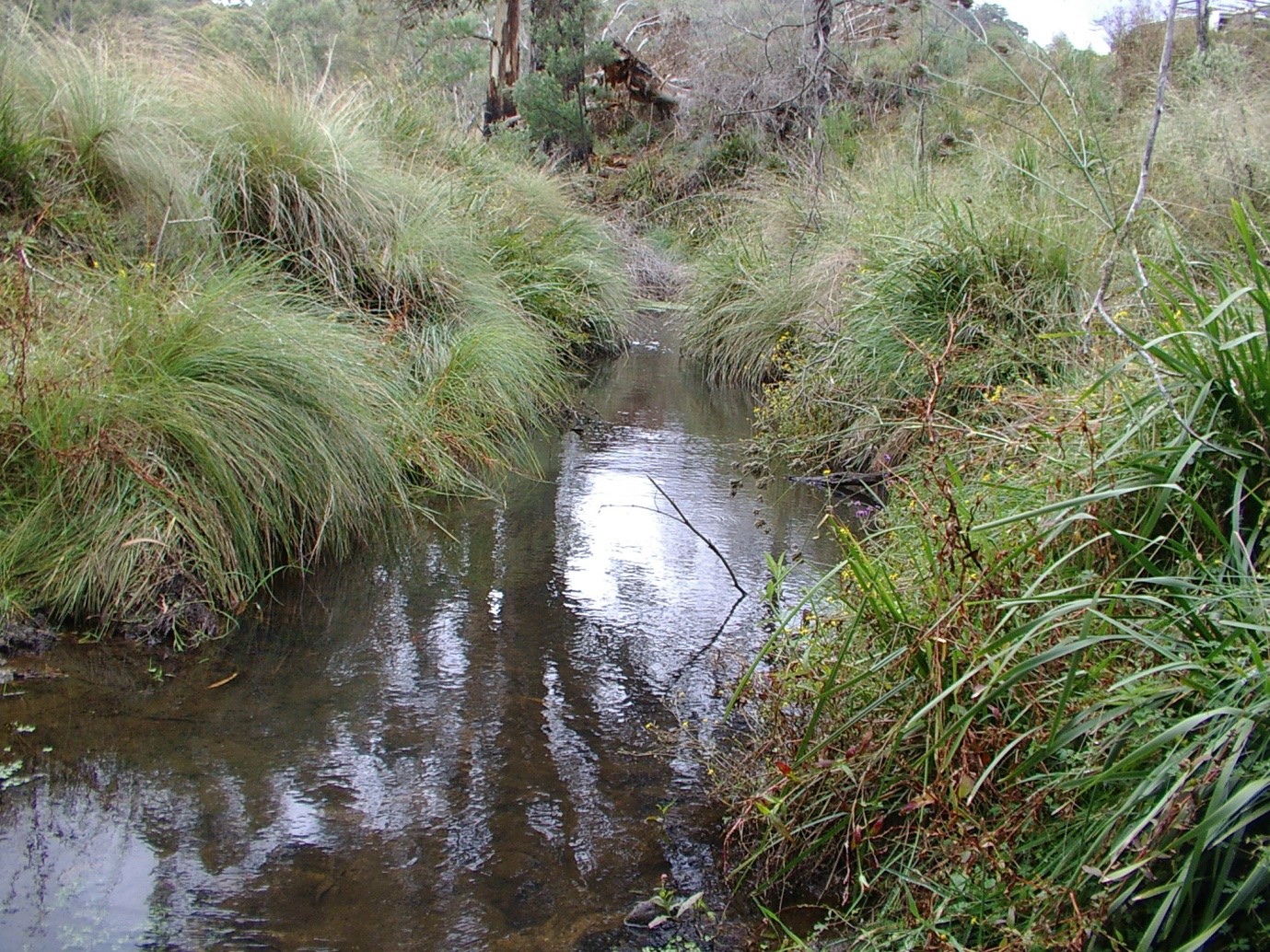
Cudgegong Giant Spiny Crayfish
Scientific name
Euastacus vesper
Status in NSW
Critically Endangered.

The Cudgegong Giant spiny Crayfish (Euastacus vesper) (photo: McCormack and Ahyong 2017)
Characteristics
Some of the characteristics of the Cudgegong Giant Spiny Crayfish are:
- Green-brown dorsal colouring
- Central blue colouring on the first chelae
- Pale cream or yellow general tubercles, cephalic and cervical spines
- Large dark green to black thoracic spines
- Green walking legs
Species similar in appearance
Other Euastacus species such as E. armatus (Murray Crayfish) and E. spinifer (Giant spiny crayfish), however is distinguishable from these species on the basis of colouration and spine patterns.
Size
The Cudgegong Giant Spiny Crayfish has been documented to reach at least 71.6mm occipital carapace length.
Distribution
Cudgegong Giant Spiny Crayfish is known from five sites across a restricted area in the upper Macquarie-Bogan Rivers Basin in NSW. It has been recorded at altitudes between 743m and 1123m above sea level.
Report a Cudgegong Giant Spiny Crayfish sighting
Habitat
It is believed that larger Cudgegong Giant Spiny Crayfish prefer deeper water whilst juveniles prefer the shallow margins and under rocks along the side of riffles. Another key habitat attribute is undercut banks with overhanging vegetation cover.

Figure 3. Habitat of E. vesper, upper Cudgegong River, Coricudgy State Forest, NSW (McCormack and Ahyong 2017).
Why is the Cudgegong Giant Spiny Crayfish threatened?
- Habitat modification or destruction from vegetation clearing and farming practices as well as vegetation disturbance from exotic species including foxes, cats, and unmanaged goats
- Predation by exotic species including pigs
- Potential illegal harvest/collection of species or misidentification with the common yabby
- Increase in the frequency and severity of extreme weather events e.g. increased temperatures, drought and bushfires
- Potential pollution and pesticide run off into rivers
- Competition with and predation by introduced species such as introduced salmonids

